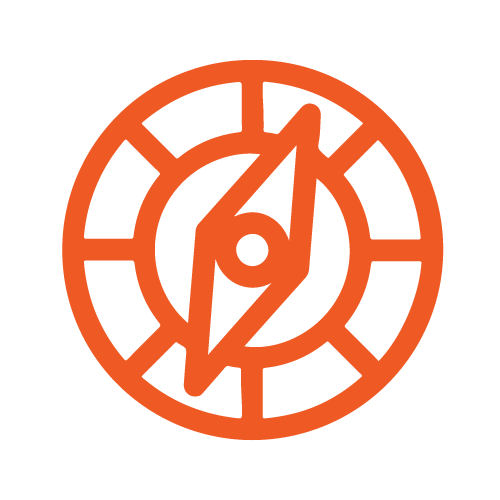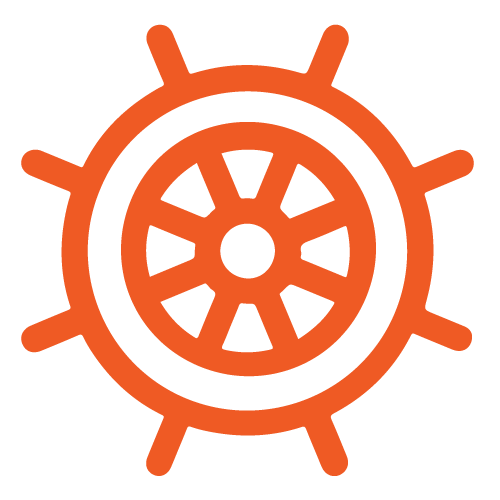When powering a lightweight boat, the small outboard motor market (typically in the 2.5 HP to 25 HP range) offers a mix of portability, fuel efficiency, and surprisingly capable performance. But selecting the right motor isn't as simple as picking a size and hitting "buy." These smaller engines serve a wide range of needs—from pushing inflatable tenders and jon boats to powering sailboats or trolling for fish—and getting the wrong one can mean frustration on the water.
Let's walk through the most important things to consider before you invest in a small outboard.
First, Define Your Use Case
Before diving into specs or comparing brands, take a step back and consider how you'll use the engine. Ask yourself:
- What kind of boat am I powering?
- How many people (and how much gear) will I usually carry?
- Am I fishing, cruising, or just getting from dock to shore?
A 2.5 HP to 3.5 HP engine might be perfect for a small inflatable or kayak, especially if you're just scooting around a calm bay or marina. But if you're loading up a 12- to 14-foot jon boat with a buddy and a full tackle box, you're probably better off in the 9.9 to 15 HP range.
It's also worth noting that some lakes and waterways restrict engine sizes. Make sure your chosen horsepower falls within local regulations before you commit.
Small Outboard Engine Weight Matters – A Lot
Small outboard engines are popular mainly because they're portable, but not all are equally easy to lift. Even a difference of 10 to 15 pounds can make a significant impact when you're hauling your motor down a dock or lifting it into your truck bed.
- 2.5–6 HP engines often weigh between 35 and 60 pounds, making them suitable for single-person transport.
- 8–15 HP outboards can weigh 70–120 pounds, which may require two people or a motor cart.
- Add-ons like electric start, alternators, or larger gear cases can bump up weight significantly.
Pro tip: Don't just look at horsepower. Check the actual weight, especially if you plan to install and remove the small outboard motor frequently. Many assume a 9.9 HP will be "about the same" as a 6 HP, and they may be surprised.
Manual vs. Electric Start Outboard Motors
Most small outboards come with a manual recoil starter, which is usually reliable and doesn't require a battery. But many mid-range small motors—especially 6 HP and up—offer optional electric start, which can be a game-changer for some users.
- Manual start is simple, rugged, and keeps weight down.
- Electric start adds convenience, especially if you'll start the motor often or have physical limitations.
If you already have a battery for lighting or electronics, adding an electric start is often an easy upgrade. Some models also offer a backup manual starting option to cover you even if the battery fails.
Short Shaft or Long Shaft?
One of the most common mistakes buyers make is getting the wrong shaft length, which can drastically affect performance, handling, and even safety.
- A short shaft (15") is usually the right fit for small jon boats, skiffs, and dinghies.
- A long shaft (20") is better suited to inflatable RIBs with high transoms or sailboats with outboard brackets.
To avoid problems like cavitation, poor thrust, or even water entering the cowling, measure your transom height accurately. If it's right on the borderline between sizes, some brands offer adjustable mounting brackets or intermediate shaft lengths, but it's best to get the closest match possible from the start.
Fuel Options: Built-in vs. External Tanks
The type of fuel tank your engine uses can affect range, convenience, and deck space.
- Built-in tanks are standard on engines up to about 6 HP and typically hold 0.3 to 1 gallon.
- External tanks are more common on 9.9 HP and above, allowing you to carry 3 to 6 gallons or more.
Some mid-sized models in the 6–9.9 HP range can run off either internal or external tanks, giving you the best of both worlds. Internal tanks are handy for short trips or tender duty and reduce clutter. But an external tank is a must if you're cruising or trolling for hours.
Two-Stroke vs. Four-Stroke Outboard Engines (Still a Question?)
Although two-stroke outboards are mostly phased out in the U.S. due to emissions regulations, you might still find them in the used market or certain international regions. The debate between the two still comes up, so here's a quick rundown:
-
Four-stroke: Cleaner-burning, quieter, better fuel efficiency, fewer emissions.
-
Two-stroke: Lighter, simpler, and snappier throttle response—but harder to find and maintain today.
For most new buyers, four-stroke is the default choice, and brands like Honda, Yamaha, Mercury, and Suzuki have refined these engines to be smooth, quiet, and extremely reliable.
Brand-Specific Perks for Small Outboard Engines
Each major outboard manufacturer brings a slightly different flavor to the table, so if you're down to a couple of options, it may come down to brand-specific features.
- Yamaha: Known for reliability and strong resistance to saltwater corrosion. Their Yamaha portable outboard models are also impressively quiet.
- Mercury: Mercury portable outboard engines are often highlighted for user-friendly tiller handles, adjustable trim options, and a lightweight feel.
- Suzuki: A smart choice for shallow or brackish water thanks to added protection against corrosion and smart water intake design. Suzuki portable outboards are always a great consideration.
If possible, test out a few different models. Dealer support and local parts availability should also weigh into your final decision.
FAQ – Small-Horsepower Outboard Motors
What is the best small outboard engine for a 12-foot jon boat?
Many boaters choose a 9.9 HP to 15 HP outboard for this size boat. It offers a nice mix of speed and control without overpowering the hull or running afoul of lake regulations.
Can I use a long shaft motor on a short transom?
Technically, yes, but it might be the wrong choice. You'll get excess drag, risk damaging the motor, and experience subpar performance. Always match shaft length to transom height.
How fast will a 6 HP outboard go?
Speed depends on the boat and load, but a typical small craft with one person and minimal gear may reach 10–12 MPH. With two people or heavier gear, expect 6–9 MPH.
Is electric start worth it on small outboard engines?
For many, yes. Especially if you have a battery onboard, electric start makes starting the motor effortless, particularly in tight spots or for those who don't want to yank a pull cord all day.
Conclusion: Choose Smart, Not Just Small
Selecting the right small-horsepower outboard motor isn't just about picking a number on the engine cover. It's about matching the motor to how you use your boat, where you boat, and how much convenience you want. By paying attention to weight, shaft length, starting method, and brand-specific features, you can avoid costly mistakes and enjoy a smoother, more reliable experience on the water.
Take the time to measure, compare, and plan, because even small motors can make a big difference. PartsVu’s customer service team is here to help if you're looking for outboard engines for sale. Contact us!















